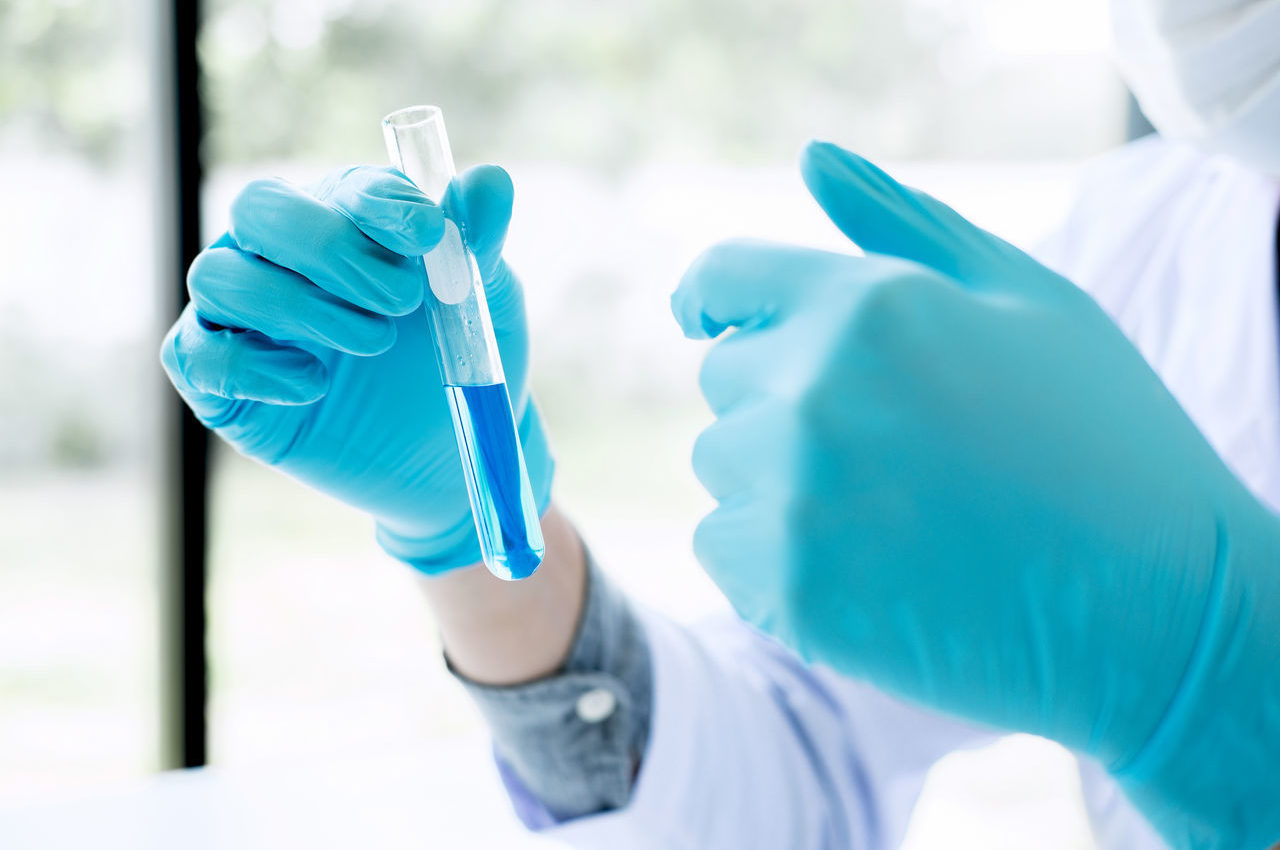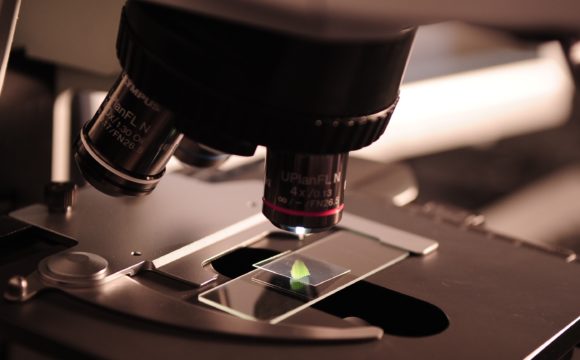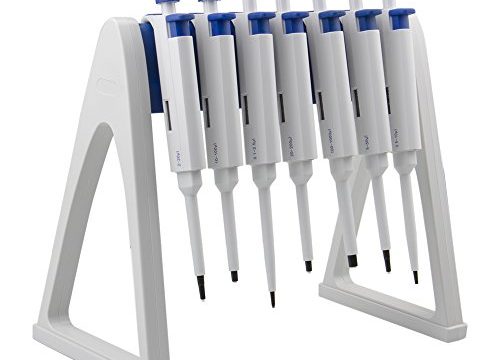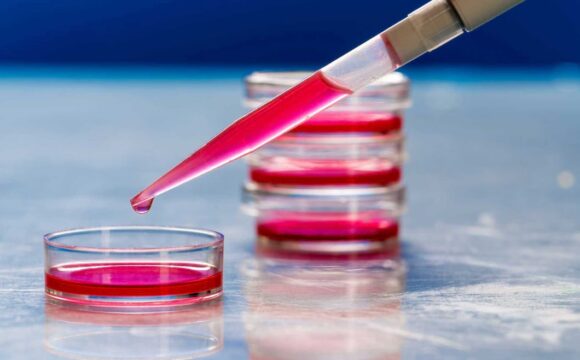While working in any laboratory, whether it is chemical, biotechnological, or pathological it is imperative to use safety gloves. Using the right safety gloves is the most essential part of any laboratory process.
Why use gloves?
The main purpose behind using gloves is to protect the hand from hazardous material, to protect skin from infections and to avoid contamination in samples.
How to select appropriate gloves?
The selection of appropriate gloves depends upon the nature of work, hazards (chemical, biological & physical), temperature, cryogenic properties, and toxicity. Select gloves that allow performing experiments without causing discomfort fits easily and protect your hands.
It is also necessary to determine the type of contact with the material, incidental or extended contact.
Incidental vs. Extended Contact
Incidental Contact:
- Very little or no direct contact with hazardous material
- Incidences such as accidental splashes, spills or accidental overspray from dispensing device.
Extended contact:
- Handling highly infectious material for a longer period
- Directly submerging hand in chemically hazardous material
- Direct physical contact with cryogenic material or with highly sharp materials.
Disposable Gloves vs. Reusable Gloves
Disposable:
- Generally made up of nitrile material
- Ideal for incidental contact
- Thin single-use gloves generally 4-8 mils thick (1 mil = 1/1000 inch)
- Used in standard laboratory procedures
- Not suitable for handling some highly hazardous chemicals
- Always Check for puncture before use
- Remove glove immediately if any chemical splashes or spills on them
- Remove gloves before touching any other object such as mobile phone, doorknobs, laptop
- Do not wash or reuse disposable gloves.
Reusable
- Reusable gloves with 18-28 mils thick (1 mil = 1/1000 inch)
- Can be used for both incidental and extended contacts
- Longer cuff than disposable gloves to prevent liquid dripping over the top of the gloves
- Check for prior punctures, rip and contamination before use
- Check for the color change, texture change, and any sign of degradation before reuse
- Wash after every use and air dry.
Sterile vs. Non-sterile Gloves
Sterile gloves are used in medical & surgical procedures, where the risk of contamination is very high. Sterile gloves are sterilized by the manufacturers as per the FDA regulations using sterilization techniques such as the use of ethylene oxide or gamma rays.
Non-sterile gloves are not sterilized by the manufacturer. Non-sterile gloves are used in standard laboratory procedures, non-surgical medical procedures.
Types of Gloves
The laboratory gloves come in different materials such as natural latex rubber, butyl rubber, polychloroprene, nitrile, polyethylene, PVC, etc. They are made up of using only one material or combination. They differ in glove thickness and style.
- Butyl Rubber: Butyl rubber gloves provide superior resistance to chemicals such as acids, aldehydes, bases, esters, ketones, nitro-compounds, peroxides and rocket fuels. These gloves protect the user against cold, oxidation, abrasion and ozone corrosion. These gloves are suitable for procedures that need extended contact with the material. However, butyl rubber gloves express poor performance against gasoline, aliphatic, aromatic and halogenated hydrocarbons.
- Natural Latex Rubber: Natural Latex Rubber gloves are applicable in standard laboratory work that demands basic laboratory safety. These easily disposable gloves offer higher elasticity and perfect fit. Natural Latex Rubber gloves are capable of resisting chemicals such as alkalis, ketones, salts, diluted acids, biological samples, and waste material. These gloves are ideal for procedures that require incidental contact with the material. Natural Latex rubber gloves provide protection against high temperatures and abrasions. However, these gloves have some limitations including poor performance against organic solvents, less chemical resistance, difficulty in the detection of punctures and may cause allergies.

- Nitrile Rubber Gloves: In the laboratory processes that include greater use of acids, bases, solvents, greases, oil, caustics, and chlorinated solvents, nitrile gloves are the perfect option. Nitrile gloves can be used in both in incidental and extended contact with the material. Both disposable and reusable forms are available. Nitrile gloves are excellent for general laboratory purposes. These highly durable gloves offer sensitivity and dexterity of use. These gloves clearly indicate tears and punctures. Nitrile gloves are a good alternative for those having allergies with latex rubber. These gloves protect the user from abrasion.

- Neoprene Gloves: Neoprene is the perfect choice to protect the user while handling acids, bases, alcohols, fuels, peroxides, hydrocarbons, and phenols. Neoprene gloves are suitable for processes that require extended contact with the material. These gloves are good for many hazardous chemicals but show poor performance against halogenated and aromatic hydrocarbons.

- Viton Gloves: Viton gloves are suitable for procedures that require an extended contact with the material. These gloves are able to protect the user from chlorinated and aromatic compounds, cuts, and abrasions. However, these expensive gloves show poor performance against ketones.

- Norfoil gloves: Norfoil or silver shield gloves offer excellent protection against many hazardous chemicals, but they do not give a perfect fit. To get dexterity, nitrile gloves can be used over norfoil gloves.

- Polyvinyl gloves: Polyvinyl gloves protect the user from acids, bases, oils, fats, peroxides, amines but show poor performance against organic solvents.
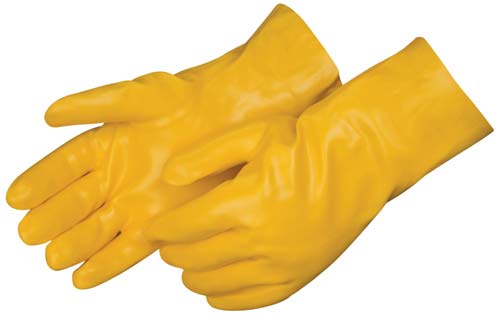
- Polyvinyl alcohol (PVA) Gloves: Polyvinyl alcohol gloves are able to protect the user from aromatic compounds but are unable to resist water-based solutions.

- Cryogenic gloves: The cryogenic gloves are used to get protection from cryogenic materials. These gloves are made up of cryogenic resistant materials such as leather. These are specially designed to protect a user from frostbite. It is advised to not to dip gloves directly into liquid nitrogen.

- Latex-free gloves: Latex-free gloves are specially made for those who suffer from latex allergy. These gloves are made using nitrile or vinyl or a combination of both. These chemical resistant gloves have a wide range of applications.
- Powder-free Gloves: Powder-free gloves are disposable latex gloves used in laboratory and medical purposes to avoid contamination. These gloves are perfect for labs where highly sensitive material is in use. These ambidextrous gloves have anti-tear properties.
Laboratory work involves handling of many chemically and biologically hazardous substances that can cause skin damage, skin infection or allergic reaction. It is essential to check the risk of each work and select the proper type of gloves that offer safety and specialized protection.
References:
- https://safetygearpro.com/safety-gloves-types-uses/
- http://www.dartmouth.edu/~ehs/chemical/chemical_gloves.html
- https://www.safetygloves.co.uk/blog/what-are-lab-gloves.html
- https://ehs.stonybrook.edu/programs/laboratory-safety/personal-protective-equipment/gloves.php
- https://ehs.berkeley.edu/workplace-safety/glove-selection-guide
- https://sellathechemist.wordpress.com/
- https://ehs.stonybrook.edu/programs/laboratory-safety/personal-protective-equipment/gloves.php
- https://www.safeopedia.com/definition/114/permeation-rate
- https://www.theglovecompany.com.au/types-of-gloves/



